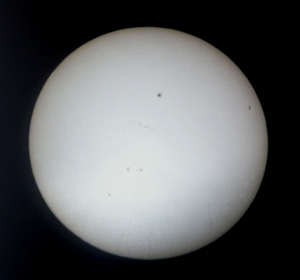From the International Dark-Sky Association:
PBS Documentary ‘The City Dark’ Explores
Problems of Light Pollution
04 July 2012. TUCSON, AZ – Beginning 5 July 2012 the Public Broadcasting Service
will start airing The City Dark, a documentary that explores the problems of light
pollution and the disappearance of stars from the night sky.
For nearly two and a half decades the International Dark-Sky Association (IDA) has
been working to sound the alarm concerning many of the issues brought up in the
film while advocating for greater controls of nighttime lighting. IDA Executive
Director Bob Parks says, “We are delighted to see Ian Cheneyʼs film get a national
stage and hope that, before too much longer, many of the issues raised in the film
will be behind us. The good news is that with awareness, light pollution is an easy
problem to solve.”
Astronomy, ecology, human health, crime and economics are some of the topics
explored in the film which follows filmmaker Ian Cheneyʼs personal exploration of the
impact of light at night as he asks “Do we need the dark?” The film covers various
aspects of light at night and features noted experts in their respective fields including
astrophysicist Neil deGrasse Tyson, writer Timothy Ferris, cancer researcher David
Blask, and many more.
Director Ian Cheney says, “We are thrilled to present The City Dark on PBS’
amazing series POV, and what better week to air than the week of July 4th; perhaps
the fireworks can serve as a reminder of all that glitters in an unpolluted starry sky,
and encourage us all to do what we can to protect the night. We are indebted to our
partners like the International Dark Sky Association for taking the lead in combating
wasteful night pollution, and grateful for our viewers for tuning in and enjoying the
film!”
For more on the film, to check local TV listings and to explore background
information on the topic, visit the PBS website http://www.pbs.org/pov/citydark/. The
PBS POV website will be streaming (in the U.S. only) the film online.
The International Dark-Sky Association, a non-profit 501(c)3 organization, was
founded in 1988 to promote environmentally responsible outdoor lighting and the
preservation of the night sky. IDA educates communities and individuals to use only
the amount of outdoor lighting necessary, only when necessary and to direct it to the
ground where it is needed. Among its efforts, the organization provides information
brochures, workshops, a model lighting ordinance, manages a night sky
conservation program, and awards the distinguished IDA Fixture Seal of Approval to
applicants with lighting fixtures that are dark-sky friendly.

